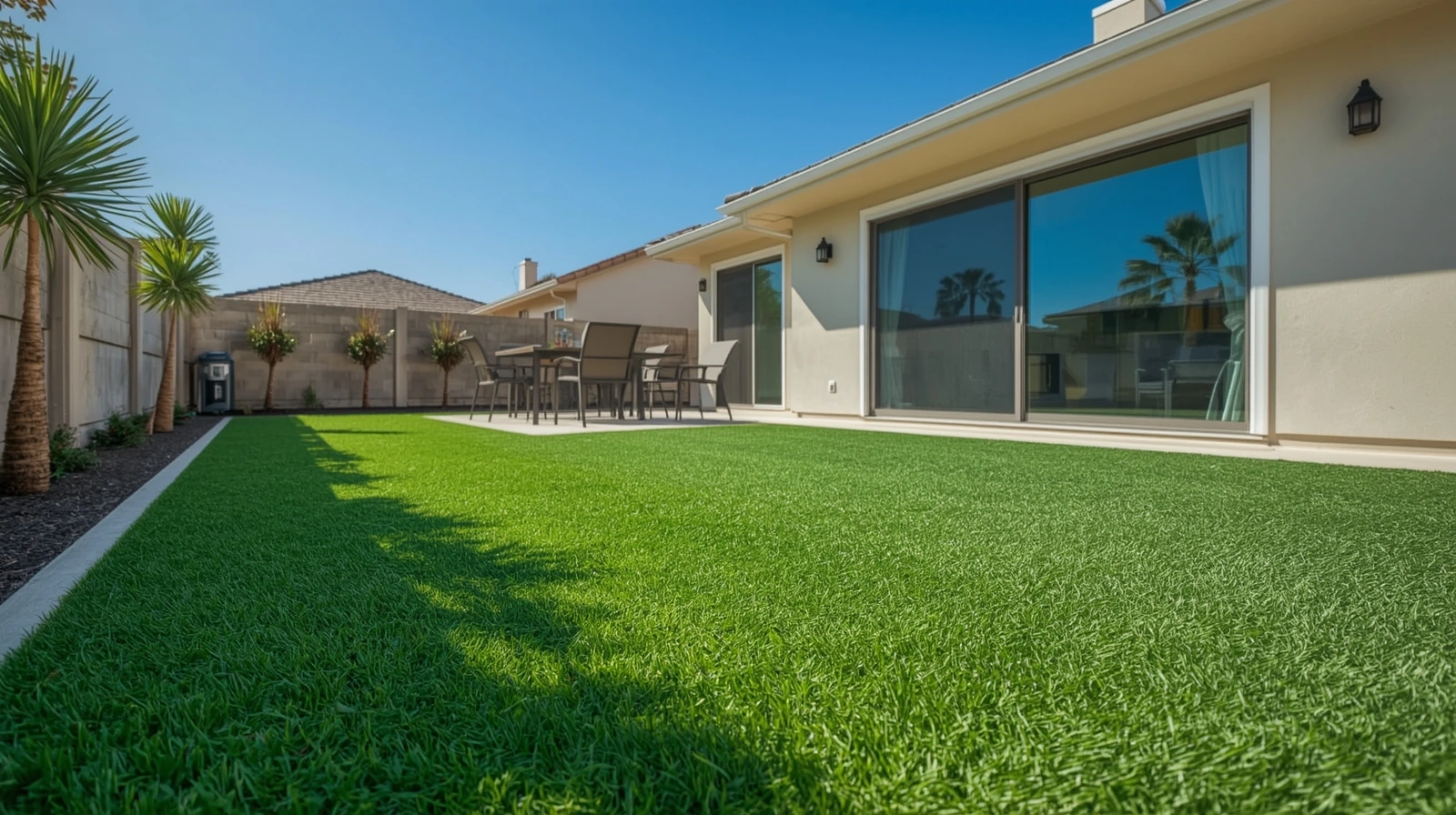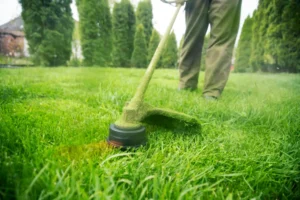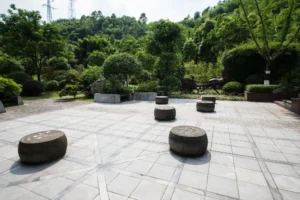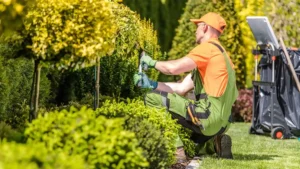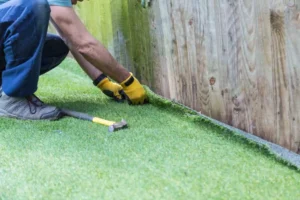One of the simplest ways to create a low-care, green lawn that stays green year-round is installing artificial turf. If you’re wondering how much artificial turf costs to install or want a step-by-step procedure for how to put artificial turf down make sure you prepare carefully. Every element matters, from how you level the surface to how you join your seams. This guide will help you accomplish the critical tasks of installing artificial turf, getting a professional look without spending your life savings
Step By Step process to Install Artificial turf
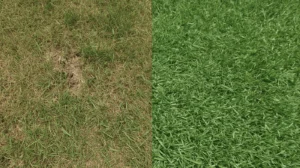
The process of an artificial lawn installation is simply straightforward, creating a green maintenance free lawn in your outdoor space. Start by planning and preparing the ground, then lay the base, roll out the turf, secure seams, add infill, and brush fibers for a professional, natural-looking finish. Here are the following
- Preparing the Area for Artificial Turf
- Remove Top Layer Soil
- Eliminate potential drainage issues
- Install a waterproof border
- Install a weed barrier
- Installing the Base
- Pour the base material
- Level the base material
- Compact the base material
- Prepare the artificial turf
- Installing Artificial Turf
Now i will explain it
Preparing the Area for Artificial Turf
Ground preparation is the first step to a successful artificial turf installation. Remove any grass, rocks, and other debris, and then level and compact the soil for a solid base. Adding a weed barrier will help with the longevity of the surface and minimize maintenance.
Remove Top Layer Soil
One of the steps you’ll need to take when getting ready for artificial turf installation is to strip away the first layer of soil to get a clean, solid base. This allows for better drainage and longer turf life.
Eliminate potential drainage issues
When planning to install artificial turf, one of the most important considerations is determining how to deal with any potential drainage issues. Poor drainage can damage your turf, cause foul odors, and cause your turf to wear out sooner than its potential life expectancy. You can provide a stable base by leveling the subgrade, installing a proper base layer, and ensuring that water is directed away from your home. Investing in quality work in the preparation phase for your turf project not only enhances the performance of the install, but in the long run, you will also save yourself money on costly repairs associated with poorly drained grass.
Install a waterproof border
Putting down artificial turf can take more than rolling out grass; you’ll want the right preparation to ensure it lasts. Always start with a solid base and put down a waterproof border that will help keep it in place. Artificial turf installation costs will vary by size of the area, so you’ll want to pay attention to labor, quality of the material, and leveling of the site to give you an idea of how much you can expect when installing artificial turf. A professional installation of artificial turf will result is a smooth, effective surface that will last a long time for lawns, playgrounds, and areas designated for sports.
Install a weed barrier
Prior to artificial turf installation, it is important to add a good weed barrier. This will stop any unwanted grass or roots from coming up through the turf, helping to ensure a smooth and low-maintenance surface. Many homeowners ask how much it costs to install artificial turf; the cost of installation often goes up due to site preparation. By adding a weed barrier, you are making the turf last longer, decreasing future maintenance, and providing durability to your turf investment.
Installing the Base
Properly preparing a solid base is the most essential step before putting down artificial turf. This typically involves stripping any existing soil, leveling the ground, and rolling or compacting a layer of crushed stone or gravel to allow for proper drainage. A solid base helps hold the turf stable, preventing uneven areas. As you plan for your artificial turf installation costs, don’t forget about the cost of the materials as well as the cost of labor, as this varies by the area you need to install.
Pour the base material
A crucial step in artificial turf installation is pouring the base material. A heavy layer of crushed stone or gravel ensures proper drainage and stable long-lasting results. When spreading the material, be sure to create an even surface, and then compact it to ensure that the surface remains solid and smooth. A level sub-base will make sure the yard will remain level, durable, and reduce the chance of shifting over time.
Level the base material
It is necessary to level the base material before the installation of artificial turf. An even and compacted base is key to getting the best results for your turf installation and avoiding any bumps or uneven areas in the lawn. A common question from homeowners before they start the process is how much to install artificial turf, but honestly, the real value is how well you prepared the base material. Using either crushed stone or sand as the base, leveling it up, and compacting it, will give you the consistency and evenness you desire, which is necessary for a long-lasting and professional looking artificial lawn.
Compact the base material
A key phase of the artificial grass installation process involves compacting the base material. Once you have installed the crushed stone or decomposed granite, it is essential that the compacted surface be rolled heavily to create a solid, level base. Without heavy compaction, your turf will move, sink, and develop irregularities over time. When you ask how much to install artificial turf, keep in mind that proper base preparation and compaction are what creates long-lasting durability, smooth drainage, and a natural look.
Prepare the artificial turf
Prior to beginning the process of installing artificial turf, it is essential to prepare the ground correctly so that your installation lasts for many years. The preparation of the area means removing any old grass, debris, and stones, and leveling and compacting the dirt to create a stable base. Depending on the size of the project, the context, and type of installation of artificial turf, you may also need a layer of crushed stone or sand for drainage. Proper preparation of the base ensures that the finished turf looks natural and functions well for years to come.
Installing Artificial Turf
The last process of artificial grass installation is to secure and finish the surface. After the turf is installed, the edges are carefully trimmed and secured so it won’t move. Infill such as silica sand or rubber granules is then brushed into the turf to keep the blades upright and stable. Brushing the infill into the turf allows the artificial lawn to look more natural, drain properly, and be ready for long-lasting, everyday use.
Benefit of Artificial Turf
Artificial turf offers a great way to enjoy a green, manicured yard year-round without the time and expense of constant upkeep. While a lot of people want to know what it costs to install artificial turf, the real value is in the long-term savings and convenience it offers. If you receive a good artificial turf installation, you’ll find your yard resilient, beautiful, and relatively easy to maintain throughout the year.
Key Benefits:
- Low Maintenance – There’s no mowing, watering or fertilizer needed.
- Cost Efficiency – The cost of installing artificial turf would be compensated by lower water bills and maintenance costs.
- Year-Round Greenery – Turf stays lush in every season, regardless of weather.
- Durability – Professional installation ensures drainage, stability, and long-lasting performance.
- Versatility – Suitable for backyards, playgrounds, and commercial landscapes.
how much does artificial turf cost to install
For homeowners looking for a low-maintenance, long-lasting lawn, installing artificial grass can be a good investment. The total cost can vary based on the turf you choose, the quality of product and material you select, labor, and site prep. Overall, you can expect artificial turf installation or synthetic grass to run between $5 and $20 per square foot on average; however, prices can fluctuate depending on your location and how complicated the project is. When estimating how much to install artificial turf, it’s not just the flat upfront cost that should be taken into account, but the long-term savings you will get from reduced water usage and lawn care and maintenance expenses.
Key factors that affect the cost of artificial turf installation:
- Turf quality & type – the better quality the turf is, the more natural it will look; it will also usually it more cost.
- Labor charges – professional installation ensures durability.
- Site preparation – removal of existing grass, leveling the ground and possibly adding base materials..
- Project size – larger areas may reduce cost per square foot.
Conclusion
Artificial turf installation is much more than a simple DIY job – it is creating a lasting surface that looks natural and performs well in every season. The emphasis should be on proper ground prep, drainage, and anchoring each seam to guarantee a smooth finish to the application that will hold up to daily use. When it comes to artificial turf installation, whether or not you are selecting to handle the installation yourself or to pay for professionals to install, the money spent pays off in low-maintenance, green lawns and landscapes for many years to come. While you may be thinking, “How much does artificial turf installation cost?”, we have to understand that costs may vary, but the addition of durability and curb appeal makes it a long-lasting upgrade to any residential or commercial landscape.
Installed New Turf? Don’t Skip the Watering Step
Discover exactly how much to water your turf for a healthy, lush lawn that lasts.
FAQs About Artificial Turf Installation
Q1. How much does it cost to install artificial turf?
The cost of installing artificial turf will depend on the size of the area you’re having done, the type of turf you choose, and any preparation required. In general, the cost reflects a combination of price for materials, labor, and ground preparation.
Q2. Can I do artificial turf installation myself?
Yes. Many homeowners have installed turf on their own using the proper tools. However, having an installer do the job will result in better drainage, seam alignment, and long-term durability of your turf.
Q3. How long does artificial turf last once installed?
Good quality synthetic turf that is installed properly should last 12 to 15 years with limited maintenance. The turf is an investment, and a durable, well-made turf will appreciate in value over the years.
Q4. Is artificial turf safe for kids and pets?
Yes, most turf products available today meet the safety needs of kids and pets, are non-toxic and durable, and soften hard surfaces.

